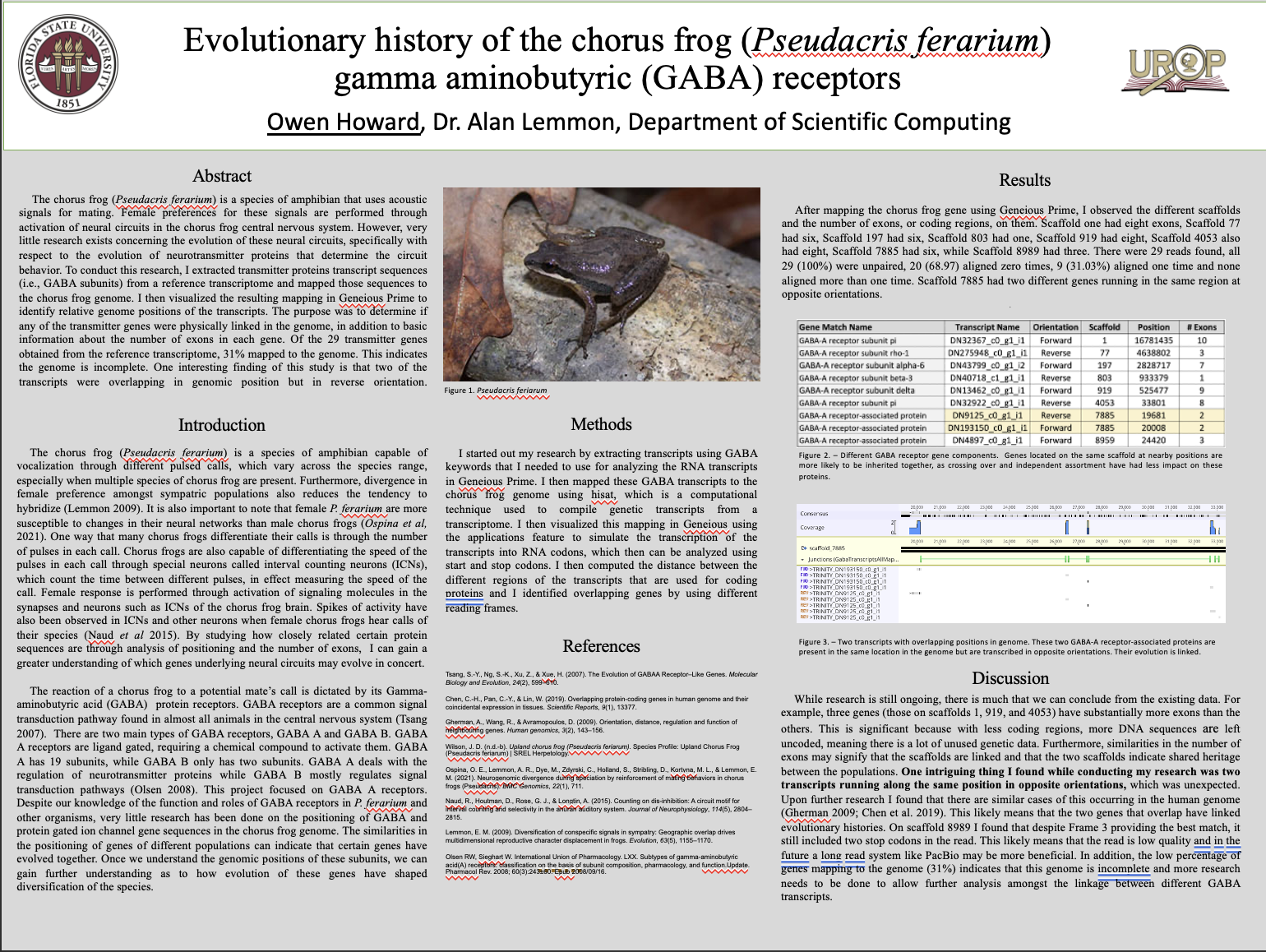Research Symposium
24th annual Undergraduate Research Symposium, April 3, 2024
Owen Howard Poster Session 4: 2:45 pm - 3:45 pm /52

BIO
Greetings! I'm Owen Howardand I am a sophomore majoring in Computational Biology. Throughout my life, I've always been fascinated by computer science: how writing code can make computers do things that are very difficult for humans, such as solving complex math problems. My focus, however, is more on the biological side. As someone who has been driven to understand the complexities of the genome, computer science skills allow me to analyze scaffolds and fragments and create mock transcriptions. From there, I can examine matches in the different scaffolds to determine how closely related different genes are. Practicing these techniques in UROP has given me a front hand experience of the research I will one day be able to lead and conduct.
Evolutionary history of the chorus frog (Pseudacris ferarium) gamma aminobutyric (GABA) receptors
Authors: Owen Howard, Dr. Alan LemmonStudent Major: Computational Biology
Mentor: Dr. Alan Lemmon
Mentor's Department: Scientific Computing Mentor's College: Arts and Sciences Co-Presenters:
Abstract
The chorus frog (Pseudacris ferarium) is a species of amphibian that uses acoustic signals for mating. Female preferences for these signals are performed through activation of neural circuits in the chorus frog central nervous system. However, very little research exists concerning the evolution of these neural circuits, specifically with respect to the evolution of neurotransmitter proteins that determine the circuit behavior. To conduct this research, I extracted transmitter proteins transcript sequences (i.e., GABA subunits) from a reference transcriptome and mapped those sequences to the chorus frog genome. I then visualized the resulting mapping in Geneious Prime to identify relative genome positions of the transcripts. The purpose was to determine if any of the transmitter genes were physically linked in the genome, in addition to basic information about the number of exons in each gene. Of the 29 transmitter genes obtained from the reference transcriptome, 31% mapped to the genome. This indicates the genome is incomplete. One interesting finding of this study is that two of the transcripts were overlapping in genomic position but in reverse orientation.
Keywords: biology, genetics, computer science, computational biology, computational science, bioinformatics


